Why travel to Shanghai?
For any Traveler, Shanghai Travel Itinerary is a very remarkable and enjoyable experience in his life. Visiting a lot of places in China
Where to Stay in Shanghai?
After visiting a historical place or any tourist corner through walk or Bus, Car or Train, our body gets exhausted and stressed a lot and sometimes we
Where to Take Meals During Travel in Shanghai?
Food is one of the most important components of a Nation. One can understands their culture, taste bud, likings, food habits
Where to get travelling information about Shanghai?
Welcome to our Travelogue Treasure, your ultimate entrance to a memorable journey. For people who observe lives
About a Treasure of Travel Lover
Hello! I’m Rajib, welcoming you to my travel blog. I’m very passionate about travel, like to explore the incredible and beautiful world of Almighty. Here is the place where I share my love and passion for traveling with a remarkable focus on the wonderful and incredible China. For a long I’ve been enchanted with China’s rich history, dynamic culture and stunning landscapes. I got the opportunity to explore a lot of different corners of this wonderful country from bustling metropolises to the mountain villages.
Here I share some of my own experiences of visiting historically enriched China. You will get my travel story, tips for navigating the country. If you are planning to make a trip to China you will get clear ideas of their culture, language and many more to make your travel easier, comfortable and enjoyable.
About Shanghai City
Shanghai, a city known as the “Pearl of the Orient”, is like a shining gem, attracting the world’s attention with its unique charm and appeal. The Huangpu River flows slowly with countless high-rise buildings standing on both sides. They are brightly lit at night, like a series of gorgeous galaxies, decorating the night sky of Shanghai like a dream. The skyscraper buildings not only symbolize the geographical diversity but also symbolize Shanghai city. Each one carries a unique history and culture, telling the prosperity and prosperity of Shanghai.
However, the beauty of Shanghai is not limited to high-rise buildings and bustling night scenes. In every corner of this city, you can feel the unique cultural atmosphere. From the Shikumen houses in the old alleys to the fashionable trends in Xintiandi, from the historical buildings on the Bund to the modern style of Pudong, Shanghai, with its diverse cultural landscape, shows the city’s profound cultural heritage and infinite vitality.
The beauty of Shanghai is a comprehensive beauty, which has both external prosperity and magnificence, as well as internal cultural heritage and humanistic care. With its unique charm, this city integrates various elements from ancient and modern times, both at home and abroad, forming a unique urban style. Here, you can taste a variety of delicacies and feel the cultural collision of different regions; you can stroll in the corridor of history and explore the marks that have been worn by the years; you can also immerse yourself in the hustle and bustle of the modern city and feel the fast-paced life.
History of Shanghai
The history of Shanghai should start from the Spring and Autumn Period and the Warring States Period. Shanghai belonged to the State of Wu during the Spring and Autumn Period. During the Warring States Period, it belonged to the State of Yue and the State of Chu successively. During the Spring and Autumn Period and the Warring States Period, Shanghai was the fief of Huang Xie, the Lord of Chu, so it was also called “Shen”.
During the Jin Dynasty, because fishermen created the fishing tool “Hu”, the place where the river flows into the sea is called “Du”, so the area in the lower reaches of Songjiang River was called “Hu Du”, and later “Hu” was changed to “Hu”, so Shanghai was abbreviated as “Hu”. In the tenth year of Tianbao in the Tang Dynasty (751 AD), the Shanghai area belonged to Huating County (now Songjiang District).
In the second year of Chunhua during the Northern Song Dynasty (991 AD), the upper reaches of the Songjiang River were dealing with persistent silting, which caused the river to shift eastward. This made it quite tricky for large ships to navigate in and out, forcing foreign vessels to anchor at “Shanghai Pu,” a tributary of the Songjiang River. This area is located near the Huangpu River, not far from today’s Shiliupu at the Bund.
In the third year of Xianchun in the Southern Song Dynasty (1267 AD), a town was set up on the west bank of Shanghai Pu and named “Shanghai Town”. In 1292 AD, in the 29th year of the Yuan Dynasty, Shanghai town was separated from Huating County by the central government and the foundation of Shanghai County, marking and start.
Shanghai has a long history and was one of the second batch of 38 historical and cultural cities promulgated by the State Council in 1986. The western part of Shanghai was already land 6,000 years ago, and the urban area was fully formed in the first half of the 10th century.
Back in the Warring States Period, Shanghai was initially part of the State of Yue before it became a territory of the State of Chu. King Kaolie of Chu chose Huang Xie to be his prime minister and honored him with the title of Lord Chunshen. Shanghai was under his state, and Shanghai originated from the nickname “Shen.”
Another nickname of Shanghai is “Hu”, which comes from “Hu Du”. In ancient times, fishermen in Shanghai area invented a bamboo fishing tool called “Hu”. At that time, there was no place name Shanghai, and this area was called “Hu Du”.
Mainly, the origin of the name “Shanghai” started from the Song Dynasty. At that time, Shanghai had begun to become an emerging trading port in my country. There were 18 major ports in the Shanghai area at that time. One of them was called Shanghai Port. It was located in the Huangpu River from the Bund to Shiliupu today. There was a Shanghai Town on its west bank. These are the origins of the name “Shanghai”.
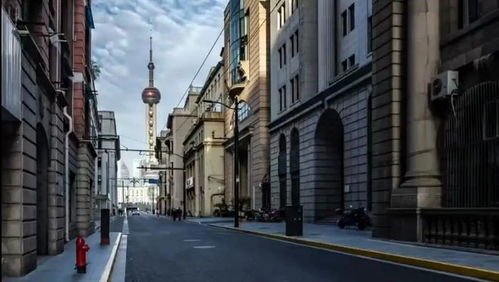
In the Yuan Dynasty, Shanghai Town had developed greatly and established the Maritime Customs Office. After that, Shanghai Town was upgraded to Shanghai County. In the Ming Dynasty, Shanghai had become China’s largest cotton textile center, and its commercial economy was increasingly developed. In the year of 1685, the 24th year of the Emperor Kangxi’s reign, a customs office in Shanghai was established by the Qing Government. During the reigns of Emperor Qianlong and Emperor Jiaqing of the Qing Dynasty, Shanghai gradually became a major trading port and grain transportation center in China, and was known as “the gateway to the sea and the southeast”.
In 1843, after the Opium War, Shanghai was forced by the colonialists to open up as a trading port. In 1845, Britain first established a concession in Shanghai. Later, the United States established a concession in Shanghai.
In 1849, France also established a concession in Shanghai. In the year of 1863, after the international settlement of the British and American concessions, Shanghai was separated into 3 parts: the French Concession, the Chinese Concession, and the International Settlement.
Whenever I think of traveling, I always want to wander among the mountains and rivers where I can travel freely and breathe freely. And this time, I chose Shanghai, the •oriental Paris • that carries the history and culture of China during that special period behind its infinite prosperity.
As I boarded the high-speed train, the theme song of the TV series “Shanghai Beach” played in the early years echoed in my ears again and again: The waves are running and flowing and the surging river water never stops. This seems to be my impression of Shanghai, that is both empty and fixed.
In the 1930s, Shanghai was plagued by internal and external troubles, and chambers of commerce were everywhere. What about now? With a head full of expectations, I sent out the first Weibo of this trip: I hope to encounter the historical memories of the past in the prosperous scene of Shanghai. After a three-hour drive, before my thoughts calmed down, I arrived at Shanghai Hongqiao Railway Station.
In order to truly touch the soul of Shanghai, I booked a hotel near the Bund online early. The hotel is across the street from the Bund, which is just right for quiet in the bustling city and scenery in the quiet.
It takes 1 minute to walk from the hotel to the Bund. Classic buildings over a hundred years old can be seen everywhere along the road. The signs clearly tell people the time and style of the buildings, making people feel like they are traveling through time. Shanghai is very quiet. When quietness and prosperity are intertwined, in addition to the feeling of mismatched words, there seems to be a dislocation of reality.
However. when you are there, you feel not only her hardware civilization but also the humanistic feeling. Because what I see is that even the people who travel in the city are particularly elegant, not ostentatious, not noisy, just like the buildings in this city, full of tolerance.
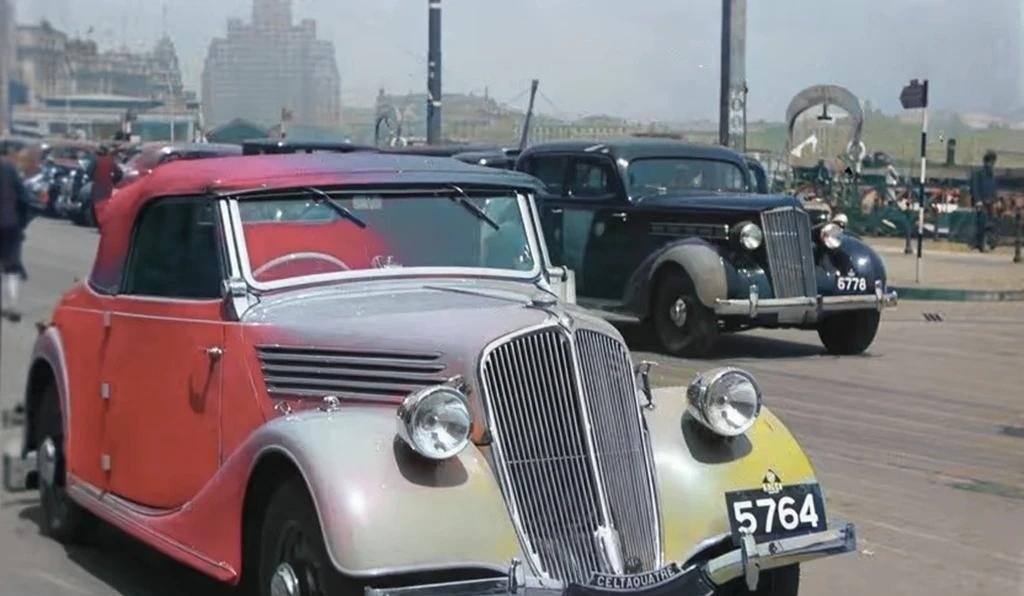
From the architecture of a city, we can see the city’s construction concept and the recognition and protection of historical values. The International Buildings and the Bund complement each other. They not only condense the characteristics of Shanghai, but also represent the soul of Shanghai.
This four-kilometer-long building complex, with Gothic architecture, ancient Greek architecture, French architecture, etc., is well designed and has different styles. It was built during the concession period more than a hundred years ago. From today’s perspective, this landscape should be the embellishment and feature of this city. As a forbidden area where “Chinese and dogs” were not allowed to enter at that time, it left the Chinese with an indelible national shame.
It’s a miserable part of Chinese history how they were suppressed by the outsiders. Though future can be created but history can’t be rewritten. Today, Shanghai, as a world-class port and trading city, has long been admired by other countries. These can be the pride of the Chinese.
Climbing up the stairs from the International Building Complex, the scenery has completely changed. The surging Huangpu River flows eastward. In the millennium unknown to me, it has staged countless national hatreds, family feuds, joys and sorrows, and benefited countless people in shipping or fishing.
Today, her appearance has given the world another makeup, that is, her scenery decorates the city like a jade belt around the green mountains, like a green mirror. The fun of the tour has not yet ended, but dusk has arrived. Unexpectedly, the Bund at night is as bright as colored glass, and large and small cruise ships compete to stage a feast of lights.
The huge cruise ship is as transparent and illusory as a cicada’s wing under the reflection of the lights. Sitting on the boat, various buildings on both sides of the river rise up along the shore, and the buildings that cost every inch of land bloom with colorful lights at night, which is as beautiful as a fairyland. At this time, everything seems to be far away, except for the lights and the river. Just like the world is out of this world.
Nanjing Pedestrian Street and Henghuang Temple should be the places that everyone who goes to Shanghai must visit. It is lively and lively here, giving people a sense of comfort and stability. In particular, the small sightseeing cars that are doing a booming business on Nanjing Road Pedestrian Street, each of which has the words “Citibank” printed on the front, make me imagine Shanghai in the Republic of China era, modern and generous Shanghai women, carrying bags in their hands, walking leisurely. At that time, Shanghai was also prosperous and luxurious on this pedestrian street. Today, it continues to write the fragrance of history because the footsteps of this city have never stopped for a moment.
As the stars gradually brighten and the night deepens, the fashionable Bund begins to light up with brilliant neon lights and the towering skyscrapers, combined with the colorful lights, show people the various styles of this young city.
The Bund, shrouded in the night. It is particularly charming under the decoration of thousands of lights. Lujiazui was isolated by a river and reflects the mesmerizing beauty on Huangpu river.
The towering Oriental Pearl Tower, the Shanghai World Financial Center the Jinmao Tower all compete to show off their beauty, bathed in the flashlights of tourists’ cameras. Not far from them, the Shanghai Tower rises from the ground, showing its dignity to people at a higher altitude. Of course, at the same time, it also shows the popularity of Shanghai’s “competition.
On the Observation deck, people were bustling. Their lazy steps and SLR cameras made it easy for me to tell that most of them were tourists from other places.
The whistle of the cruise ship on the Huangpu River and the noise of the crowd combined to form a picture full of foreign style. If I closed my eyes, I could smell the fragrance of high-end cocktails at the dance party. From time to time, I could hear a few sincere compliments or exclamations: Shanghai’s night is so charming!
People’s Square, not far from the Bund, is a place where all kinds of people in this city hustle between various high-end office buildings.
Of course, you must not miss the Yu Garden, the Museum, Madame Tussauds and other classic scenic spots, especially the Oriental Pearl Tower and the Museum, Tiazifang and many more. The former is a masterpiece of modern architectural civilization, and the latter shows the majestic and dignified historical picture of ancient Chinese art, which will make every visitor encounter it’s beautiful memory forever.
Whether you are a new visitor or a resident, the beauty of Shanghai will captivate you. This city, with its unique charm, will allow you to discover new surprises and touches in every exploration. Shanghai, this vibrant and charming city, is waiting for your arrival to feel its prosperity and beauty, and to experience its culture and history.
Old Town Shanghai China
The Old Town Shanghai China, which was formerly known as Nanshi District, is located in the southern part of Huangpu District. For friends who are visiting Old Town Shanghai China for the first time, it is recommended that you take Shanghai Bus No. 11, which starts from Lao Ximen, passes Xiaobeimen, Laobeimen, Xinbeimen, Xinkaihe, Xiaodongmen, Dadongmen, Xiaonanmen, Dananmen, Zhonghua Road and Shangwen Road, and finally returns to Lao Ximen. Bus No. 11 has 10 stops in total. It was formerly known as the “Ring Road around the City” (“Ring Road” is today’s ring line). It starts from Fangbang Middle Road, Renmin Road, Huangpu District, Shanghai, and goes around the city along the moat of the former Shanghai County.
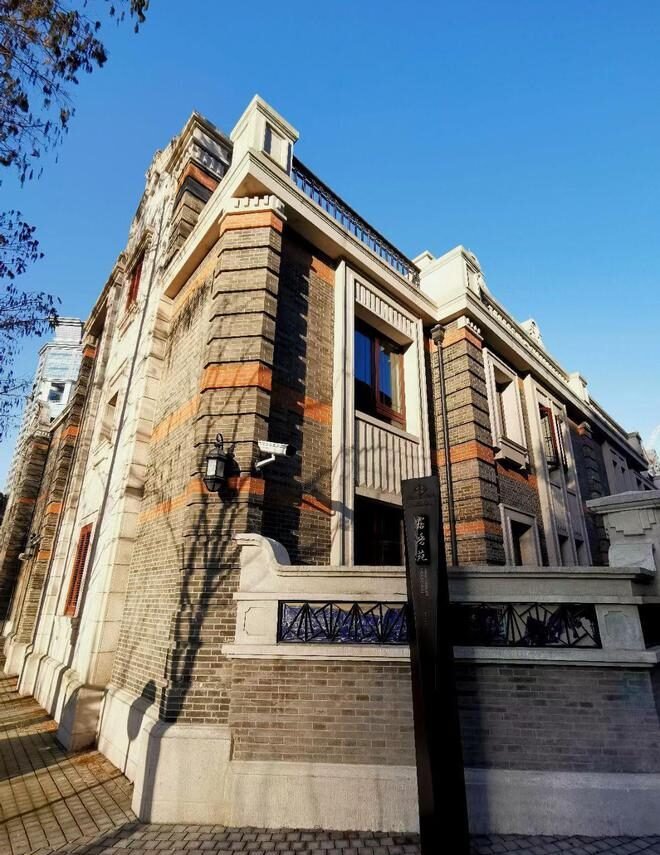
The main road along the way, Renmin Road, connects the old memories of Shanghai. The Confucian Temple, the City God Temple, the Yu Garden, the Siming Public Office, a memorial to the Shanghai people’s struggle against imperialist expansion and concessions, and the former site of the Shanghai Bookstore, an early publishing and distribution agency of the CPC Central Committee, are all located along the road.
In the 32nd year of Jiajing in the Ming Dynasty (1553), Shanghai County at that time built six city gates to resist Japanese pirates. Among them, there is a city gate called Yifeng Gate at the intersection of Zhaojiabang and its northern road, the city wall and its western moat. Because this city wall is on the west side, it is also called “Old West Gate”.
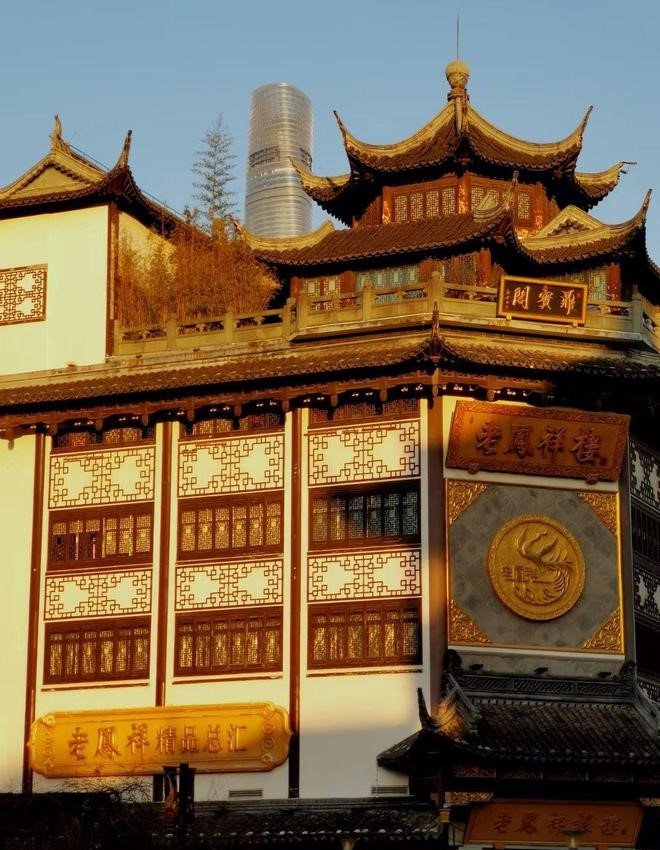
Xiaobeimen Subdistrict is located in the southern part of Shanghai, at the junction of Huangpu and Luwan districts, between the commercial and downtown areas of Huaihai Road. The Xiaobeimen area was originally part of Yimiao District and part of Songshan District.
Xiaobeimen is located in the old city in shanghai with many ancient buildings and revolutionary sites. In the late Ming Dynasty, the Gu family built a private garden called Luxiang Garden, which was famous for its abundant peaches. During the Wanli period of the Ming Dynasty, a Guandi Temple was built on the city wall. In the Qing Dynasty, it was rebuilt into a three-story pavilion called Dajing Pavilion. In winter, you can climb the pavilion to enjoy the “Jianggao Jixue”, one of the “Eight Scenic Spots of Shanghai”.

Laobeimen is located in the area of Renmin Road and Henan South Road in the northern part of Nanshi District, Shanghai. It is named after the former Yanhai Gate, the city gate of the old city of Shanghai. It is a major commercial spot in the district, with ceramics, food, fruit, hardware, department stores and other stores. The residential areas are densely populated, mainly Shikumen houses.
Xinkaihe is an old place name in Shanghai. It is located in the northeast of the former Nanshi Old Town, and refers to the area along the Huangpu River including Renmin Road, Xinkaihe Road, Xinyong’an Road and Zhongshan East Second Road.
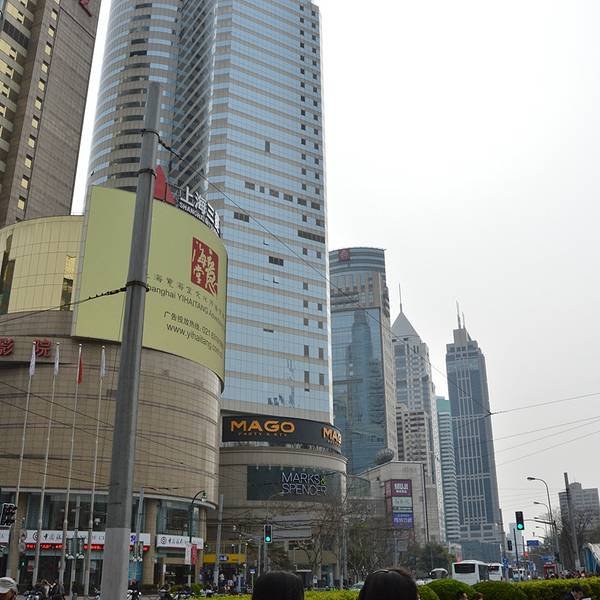
Xiaodongmen is the passage between Shiliupu Wharf and the Old Town God Temple, and has obvious geographical advantages. To the west of Xiaodongmen is Fangbang Road, which has now been transformed into the “Shanghai Old Street” and has become an important tourist attraction.
Old Shanghai Street
Old Shanghai Street is divided into two sections, east and west, with Guanyi Street as the boundary. The east section has been decorated and renovated to retain the residential features of the late Qing Dynasty and the early Republic of China. The lattice windows, door panels, Fan-style railings, floor-to-ceiling rocker doors, etc. have been restored on both sides of the old shanghai street, and the eaves, lace drips and horse-head walls on the roofs have been added. The facades of the houses in the west section imitate the buildings of the Ming and Qing Dynasties, highlighting the folk customs of the old city of Shanghai.
The business operation model is dominated by traditional characteristic industries, highlighting traditional folk culture. It has reproduced century-old shops such as Tong Hanchuntang, Wan Youquan, Old Shanghai Teahouse, Chunfengdeyilou, and also opened shops with traditional characteristics such as Danfeng Teahouse and Mingyitang.
Xiaonanmen was also a bustling area with many markets formed around it, such as Doushi Street for the bean business and Mizhu Street for the bamboo and wood business, which showed how prosperous its business was.
Find a sunny afternoon, take the No. 11 Shanghai tram, and savour the flavour of Old Shanghai Street as it sways at a slow rhythm.
Cities Close to Shanghai
The prefecture-level cities around Shanghai are: Zhoushan, Shaoxing, Huzhou, Jiaxing, Suzhou, Wuxi, Changzhou, Nantong.
Around Shanghai, the sub-provincial Cities are: Hangzhou, Nanjing, Ningbo.
Cities close to Shanghai within about 100 kilometers are: Jiaxing, Suzhou, Nantong, 3 prefecture-level cities, Pinghu, Kunshan, Taicang, Changshu, Haimen, Qidong, 6 county-level cities, and Haiyan, Jiashan, 2 counties.
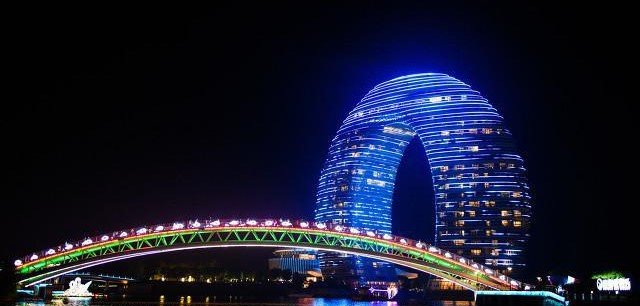
Cities close to Shanghai within a circle of about 150 kilometers (in addition to the above-mentioned 100 kilometers, there are also the following): 7 prefecture-level cities including Zhoushan, Ningbo, Shaoxing, Hangzhou, Huzhou, Wuxi and Changzhou, as well as county-level cities including Yuyao, Cixi, Shangyu, Haining, Tongxiang, Zhangjiagang, Jiangyin, Jingjiang and Yixing, and counties such as Shengsi, Daishan, Shaoxing County, Deqing and Rudong.
Shanghai is abbreviated as Hu or Shen. It is the birthplace of the Communist Party of China, a municipality directly under the Central Government of the People’s Republic of China, a central city of the country, a megacity, and one of the first coastal open cities in China’s economic, transportation, technology, industrial trade, finance, exhibition and shipping centers.
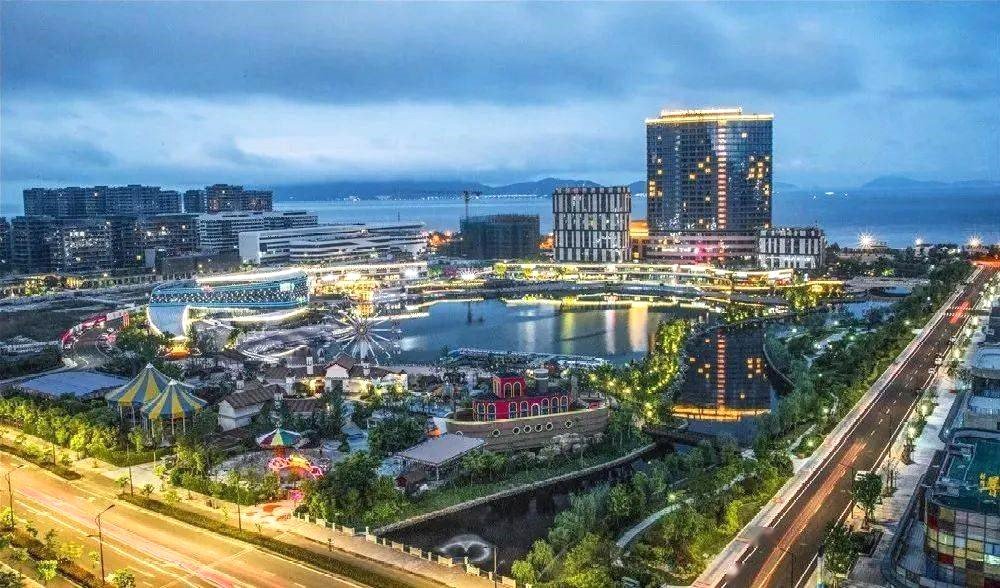
Cities Close to Shanghai are Nanjing, Hangzhou, Ningbo, Kunshan, Taicang, Changshu, Zhoushan, Shaoxing, Huzhou, Jiaxing, Suzhou, Wuxi, Changzhou, Nantong, and Taizhou.
Shanghai Night Market
Linfen Road
Stroll Around: The most famous street stall in Shanghai, known as the ” Nanjing Road of Pengpu New Village “. Even though Linfen Road is very narrow, it attracts visitors from near and far every night.
At 7pm on Linfen Road, office workers are busy leaving get off work and stall owners are busy going to work. The sound of hawking comes one after another, and the stall owners are bargaining relentlessly. The stall owners are all in high spirits to welcome the golden period of the night market, and passers-by stare wide-eyed to find the goods they like.
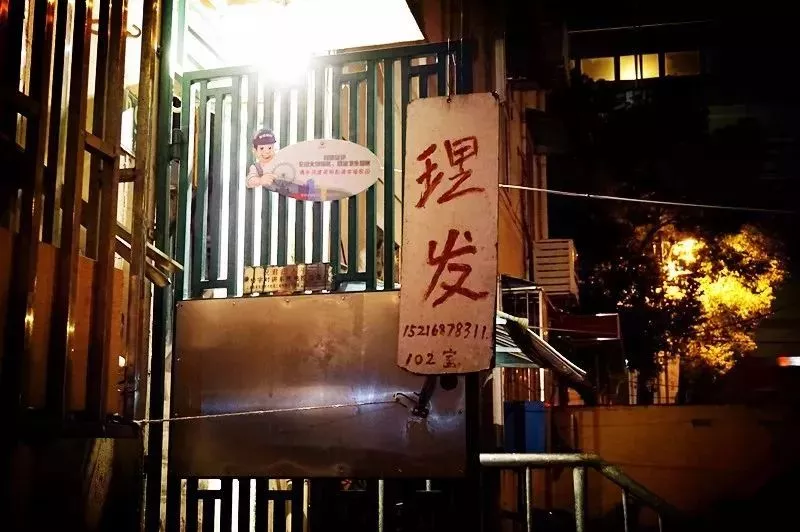
After picking out clothes, shoes, and jewelry, flipping through toys, CDs, and bags, trying sausages, squid, chicken wings, and shaved ice, and playing with mice, chinchillas, and new pets, half an hour later, I had so much “trophies” that I couldn’t even take them all: a dozen iron hangers for 8 yuan, a mobile cabinet for the bathroom for 13 yuan, a pile of pots and pans for 15 yuan, a pair of popular peep-toe patent leather shoes for 20 yuan, and a one-piece suspender dress for 30 yuan. I didn’t even spend all the 100 yuan.
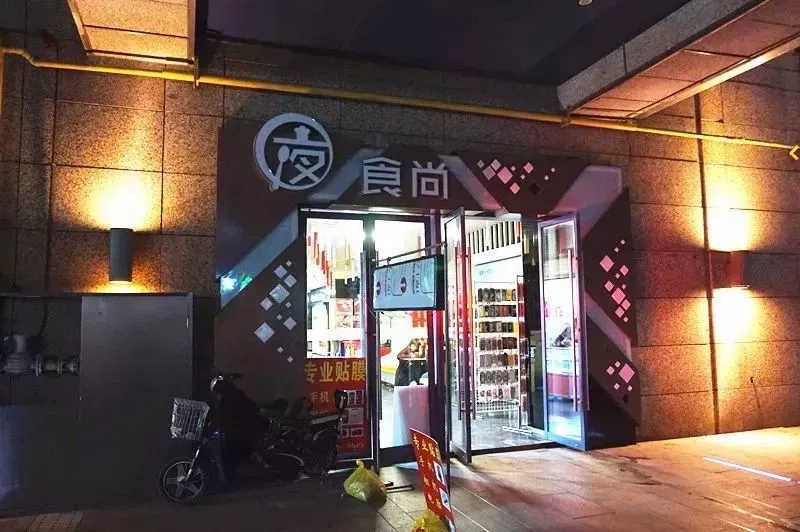
Trophies: There are several very cheap shoe stalls near Gonghexin Road. Shoes that would cost 40 or 50 yuan on Qipu Road can be bought for only 25 yuan here.
New Nishinomiya
Stroll around: Xinxigong is known as the “Little Qipu” in Shanghai, but it is far less crowded and crazy than Qipu Road. Many of the shop owners in the New Nishinomiya shopping mall are young people who have started their own businesses. Their products are definitely unique and trendy. The night market is basically open until 9-10 pm.
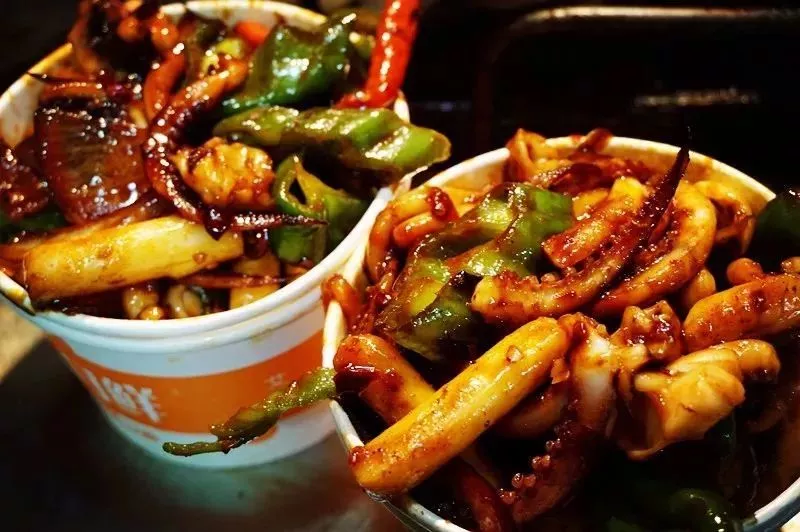
There are countless small and odd items, including food, toys, daily necessities, and even flowers, birds, pets, roller skating rinks, and fashionable parts of urban life. It is extremely popular.
The spoils: New Nishimiya’s manicures, hair extensions, and photo booths are famous and inexpensive.
Zhongyuan Road
Go shopping: As the sky gradually darkens, the entrance of Auchan Supermarket on Zhongyuan Road presents a busy scene. The supermarket is bustling with customers, and outside the supermarket, hundreds of stalls are lined up. There are all kinds of people, and the placement of goods is also quite unique. Unlike some vendors who arrange goods randomly, the stall owners use every inch of space reasonably to display the most eye-catching patterns.
Trophy: There is a socks stall near the end of Guohe Road. The socks are 15 yuan per pair, the quality is good, and the stall owner is so busy that he doesn’t even have time to greet you.

Dongchang Road
Among the night markets in Shanghai, the only “stalls” that can be compared with those on Linfen Road are those near Pudong Dongchang Road subway station. Here, you don’t have to worry about your wallet being empty or the waiters’ cold eyes, as every stall owner treats you as God. In the words of the stall owner himself: “Because the business is good, the mentality is good.” The good thing about Dongchang Road is that it is so “low-browed and pleasing to the eye.”
Near the World Square bus station, the lights are a bit dim, and the stalls are basically illuminated by the light from street lamps and advertising light boxes next to the bus station. Around 7:30 p.m., the outdoor lights on the nearby high-rise buildings are turned on, which also improves the shopping environment of the whole place.
At the street stalls, the flow of the crowd varies at different times. From 7pm to 8:30pm, it should be mainly the remnants of people who have just got off work. Many white-collar ladies go shopping and date with their boyfriends after get off work. After 8:30pm, the flow of people is relatively reduced, and it is mainly customers returning from shopping.
The spoils: small coin purse for 3 yuan each, plush cartoon hairpins for 5 yuan a pair. The products sold here are basically small accessories for girls, such as hairpins, necklaces, wallets, socks, key chains, etc. Standing here makes people feel like a mouse falling into a well, a paradise for street vendors.

Zhongshan Park
From Zhongshan Park Station on Line 2, the transfer passage between Line 2 and Line 3 is only 60 to 70 meters long. There are dozens of stalls selling small accessories, toys and various small household items. Many of the stalls next to the subway entrance sell CDs and discs.
There are endless street stalls, and you can still find good stuff if you look carefully. It is said that there are white-collar ladies setting up stalls here, and every time I go shopping, I can’t help but guess which one it is.
Loot: A stack of great music CDs
Changli Road
When the lights come on, Changli Road becomes a night market with a huge crowd. The night market stalls are adjacent to each other. The small restaurants on the street put tables and chairs all the way to the door, and they are busy with customers. There are no bars with ambiguous lights under the sycamore trees, but they are more popular than bars; there are few wine shops and restaurants with flashing neon lights and luxurious decorations, but most of them are affordable food stalls.
The night market on Changli Road has a wide variety of products. From needles and thread to cats, dogs, and turtles, there is everything, but the most popular thing is snacks. At the intersection, the barbecue charcoal fire billows with thick smoke, and the aroma of lamb, chicken, and skewers directly wafts into people’s nostrils, attracting those greedy diners. Several small tables are serving grilled crayfish and iced beer, which is the best place for a few friends to get together and spend their money.
Trophy: “Zhou Bin Stinky Tofu” is very famous and was said to have been on the TV program “Popular Food”. The tofu was fried really well and the sauce was delicious.

Tongbei Road
Most people who live in Yangpu go to Tongbei Road to eat seafood. The road is not long, but there are many restaurants. It feels similar to Wujiang Road, which is mainly composed of night market stalls. It is said that the seafood here is all from Tongchuan Road. It opens at 5 pm every day and closes at around 3 am.
Trophy: “Laosi BBQ” is the most famous. Although it is full of smoke, it still attracts many customers. No matter what you can think of or not, you can use it to test it.
Is Shanghai a Safe City?
Shanghai is a city with a relatively high overall safety level, but attention should be paid to local risks. The following is a detailed analysis:
Comprehensive safety evaluation:
Many authoritative reports show that Shanghai has been rated as one of the safest cities in China for many years in a row. For example, in 2017, Shanghai ranked first in tourists’ votes with a voting rate of 61%. In 2018, when Ctrip.com selected the most secure cities in China, Shanghai ranked first. In 2024, it was still rated as the “safest and most resilient city.”
Public safety and crime rate:
The number of criminal cases filed decreased by 3.8% year-on-year, the number of traffic accidents decreased by 21.4%, the number of fires decreased by 14.8%, and the murder clearance rate reached 100% Data from 2024 shows that satisfaction with public security in Shanghai continues to improve, and the public’s sense of security has significantly increased.
Smart Public Security and Governance Capabilities:
Relying on smart public security technology, Shanghai has achieved refined management of social security, such as improving the efficiency of solving cases through big data analysis. The British Economist rated China as one of the safest cities in the world in 2018.
Local risks and challenges:
Despite the overall safety, there are still short-term problems, such as fire hazards (such as fires in residential buildings and production areas of enterprises) that need to be strengthened. In addition, although individual extreme cases (such as hostage-taking cases) are sporadic, they highlight the complexity of public security prevention and control.
Summary: Through long-term governance and technological empowerment, Shanghai has become one of the safest cities in China.
Huangpu River
Shanghai, the prosperous city, has a river that has witnessed the historical changes of Shanghai and also carries the modern style of Shanghai. That is the Huangpu River. Let’s explore this charming river today and experience a journey through history and modernity. Huangpu district Shanghai China is located on the bank of Huangpu River.
In the rhythm of Shanghai’s city, the Huangpu River is like a shining ribbon, closely linking the charm of history and modernity. As the mother river of Shanghai, the Huangpu River has attracted countless tourists. Whether you take a cruise to admire the dazzling skyscrapers on both sides of the river or stroll along the river to feel the long history of the city, it is an extremely pleasant experience. Walking along the river step by step, you will find that the scenery on both sides of the Huangpu River is ever-changing, and each season has its own beauty.
In spring, the cherry blossoms and the river complement each other, making it the best time to take photos; in summer, it is a good place for people to escape the heat, and you can sit in a riverside cafe and enjoy the surrounding scenery; in autumn and winter, the night view on the Huangpu River is even more charming, especially iconic buildings such as the Oriental Pearl Tower, which appear even more dazzling under the lights.
For first-time visitors to Shanghai, it is recommended to choose a Shanghai Huangpu River cruise service to explore the river. These cruises usually offer different routes and programs, including short sunset cruises and long cruises suitable for families. During the tour, you can not only enjoy the Shanghai Night skyline but also hear interesting stories about the city’s history.
Huangpu River Location
Huangpu River, located in the center of Shanghai, is the largest tributary of the Yangtze River, with a total length of about 113 kilometers. It starts from Daying Port in Qingpu District, passes through the urban area, and finally flows into the Yangtze River Estuary. On both sides of the Huangpu River, there is the historic Bund on one side and the modern and prosperous Lujiazui on the other side, forming a sharp contrast.
Huangpu River Cruise
There are two main routes for Huangpu River cruise tours. One is the upstream route, starting from Dying Port and passing through Songjiang, Qingpu and other places; the other is the downstream route, starting from the Bund and passing through Nanjing Road Pedestrian Street, People’s Square, Lujiazui and other places.
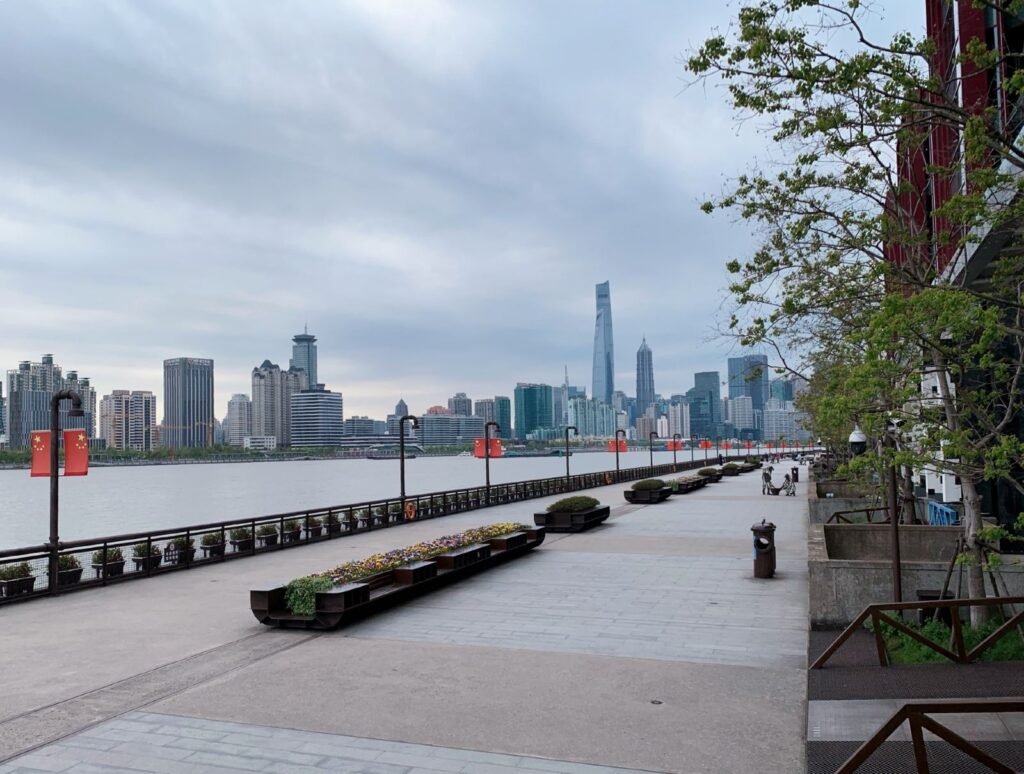
Huangpu River Lower Reaches Tour Guide:
The Bund: This is the starting point for the Huangpu River tour and is also a landmark attraction in Shanghai. The buildings on the Bund are representative of Shanghai’s modern architecture, including the British Consulate, the French Consulate, the Bank of China Building, etc. You can appreciate the historical features of Shanghai and feel the prosperity of Shanghai.
Nanjing Road Pedestrian Street: It takes about 10 minutes to walk from the Bund to Nanjing Road Pedestrian Street. This is the commercial center of Shanghai, where a variety of brand stores and food are gathered. You can shop to your heart’s content and also taste a variety of food.
People’s Square Shanghai: It takes about 15 minutes to walk from Nanjing Road Pedestrian Street to People’s Square. It is the political and cultural center of Shanghai, with important facilities such as the Shanghai Museum and Shanghai Grand Theater. You can learn about the history and culture of Shanghai and enjoy various art performances.
Lujiazui: It takes about 20 minutes by subway from People’s Square to reach Lujiazui. This is the financial center of Shanghai, with skyscrapers such as the Oriental Pearl Tower, Shanghai World Financial Center, and Jinmao Tower. You can overlook the panoramic view of Shanghai and feel the modern atmosphere of Shanghai.
Tips for visiting the Huangpu River
The best time to cruise the Shanghai Huangpu River cruise is at night, because at this time, you can see the brightly lit Bund and Lujiazui. There are many ways to tour the Huangpu River Shanghai. You can choose to take a cruise, walk or ride a bike.
The cost of a Huangpu River cruise varies according to different modes and routes. Generally speaking, the cost of a cruise is around 100 yuan. When buying tickets, tourists can learn about the safety record of the cruise ship to ensure that they enjoy a safe journey. When choosing a cruise ship, it is recommended to make reservations online in advance to avoid crowds during peak seasons.
When touring the Huangpu River Shanghai, tasting authentic Shanghai cuisine is a must. Cruise ships usually provide simple catering services, so tourists can enjoy the food while admiring the riverside scenery. However, it is more recommended to go to the nearby snack street after getting off the ship to taste pan-fried dumplings, clams and various seafood. When people are by the water, they will always be infected by the freshness and leisure, slow down their pace and feel the beauty of life.
In addition to cruises and food, there are many attractions along the Huangpu River that are worth visiting. For example, the Bund is a landmark scenic spot in Shanghai, with a century-old building complex that is breathtaking. Nanjing Road Pedestrian Street is a shopping paradise, with a wide range of goods and bustling street scenes that make people linger. Every evening, when the sun gradually sets and the lights of the Bund are lit, it is the best time to take photos, giving you countless beautiful memories.
The shanghai huangpu river cruise is a journey through history and modernity. Whether you are a history lover or a modern fan, you can find your own fun here. So, if you come to Shanghai for a tour, don’t miss the Huangpu River cruise at night.
In short, the Huangpu River cruise is an audio-visual feast. Here, history and modernity blend, and tradition and innovation collide, which is definitely a part of Shanghai travel that cannot be missed. If you have any plans to visit Shanghai, don’t forget to make the Huangpu River your first stop, and let this river take you to appreciate the glorious and simple sides of Shanghai. Whether it is the comfort of the cruise on both sides of the river, it will become an indelible chapter in your travel memory.
